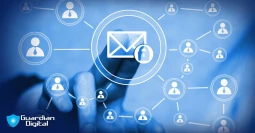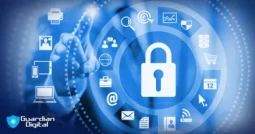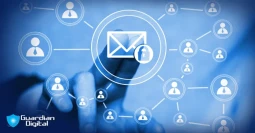Guarding the Inbox: How Can I Ensure My Email Is Secure?

In the digital realm, email communication is a lifeline for modern businesses, enabling seamless interactions and information exchange. However, amidst the convenience lies a lurking threat - cybercriminals seeking to exploit vulnerabilities in email security. Imagine a small accounting firm falling victim to a sophisticated email phishing attack that compromised sensitive client information, leading to financial loss and reputational damage. This scenario underscores the critical importance of robust email security measures in safeguarding valuable data and maintaining trust in business interactions. To navigate this treacherous landscape and fortify your digital presence, it is essential to embrace defensive measures that can stand strong against relentless cyber threats. Let's delve into guarding the inbox and ensuring your email security remains uncompromised in the face of evolving cybersecurity challenges.
Assessing Email Security: Hidden Risks to Be Aware Of
Email security is paramount in today's digital landscape, yet several common pitfalls leave businesses and users vulnerable to security breaches. Take a closer look at these reasons why your email might not be as secure as you think:
- Lack of authentication: Without proper authentication measures in place, such as DMARC (Domain-based Message Authentication, Reporting, and Conformance), email messages can easily be spoofed or forged, allowing malicious actors to impersonate legitimate senders and deceive recipients.
- Weak passwords: Using weak or easily guessable passwords is an open invitation for hackers to gain unauthorized access to your email accounts. Commonly used passwords, such as "123456" or "password," make it alarmingly easy for cybercriminals to breach your defenses.
- Phishing attacks: Phishing remains a prevalent threat, where attackers employ deceptive tactics to trick recipients into revealing sensitive information, such as login credentials or financia
l details. Clicking on malicious links or downloading infected attachments can lead to devastating consequences, as cybercriminals gain unauthorized access to your email accounts and network resources.
- Unencrypted data transmission: Failing to encrypt email communications leaves them susceptible to interception and potential data breaches. Without encryption, sensitive information transmitted in emails is easily readable by unauthorized individuals, leaving your business and clients' data at risk.
- Insufficient employee training: Human error is a significant factor in email security breaches. If employees are unaware of common phishing techniques or fail to exercise caution when handling suspicious emails, they inadvertently open the door for cyber threats to infiltrate their organization's network.
- Outdated software and systems: Operating old or unsupported email software increases vulnerability to security flaws that cybercriminals exploit. Without regular updates and patches, your email infrastructure becomes a prime target for attacks.
By understanding these common email security pitfalls, you can take proactive measures to address them and ensure a more secure email environment for your business and users.
How Can I Recognize Email Threats?
The digital landscape is teeming with cunning adversaries who employ a variety of deceptive tactics to compromise your email security. Phishing attacks, disguised as legitimate communications, aim to trick recipients into revealing sensitive information or clicking on malicious links. For instance, a phishing email might impersonate a well-known bank, urging the recipient to log in to their account via a provided link. This leads to a fraudulent website designed to steal login credentials. Malware-laden attachments and links pose another grave threat, infecting devices with harmful software. Opening an attachment from an unknown source or clicking on a suspicious link can result in the installation of malware, potentially compromising the security of your device and personal information. Spoofed or fake emails, crafted to resemble messages from trusted sources, deceive recipients into falling for scams or unwittingly disclosing confidential data. These emails often mimic official communication from organizations like banks, email providers, or government agencies, tricking users into divulging sensitive data or transferring funds to fraudulent accounts.
Pro Tips for Ensuring Email Security and Privacy
By utilizing end-to-end encryption, enabling multi-factor authentication, staying informed, employing Advanced Threat Protection tools, implementing information protection measures, monitoring account activity, regularly updating software, and using secure networks, individuals can strengthen their email defenses, safeguard sensitive data, and maintain online privacy against cyber threats.
Best Practices for Secure Email Communication
Navigating the complex terrain of email security demands a strategic approach and a comprehensive understanding of potential vulnerabilities. By implementing essential best practices and staying informed about common pitfalls, individuals and businesses can fortify their email defenses and mitigate the risk of security breaches.
- Strong Passwords: Utilize a combination of upper and lowercase letters, numbers, and special characters for robust password strength. Regularly updating passwords can thwart unauthorized access attempts and fortify your account's defenses against cyber threats.
- Regular Software Updates: Stay vigilant with software updates, as they often contain essential security patches that plug vulnerabilities exploited by hackers. By keeping your email software up-to-date, you can bolster your system's resilience against potential threats.
- Avoiding Public Wi-Fi: Steer clear of public Wi-Fi networks when handling sensitive email communications. These networks are susceptible to interception and eavesdropping, putting your confidential information at risk. Opt for secure, trusted networks or employ a virtual private network (VPN) to encrypt your connection and safeguard your email privacy.
Watch: Best Practices to Prevent Email Virus Infections
Tools & Resources for Robust Email Security
In addition to employing best practices, advanced tools and resources can significantly enhance email security and safeguard valuable data. Listed below are some essential tools and services that can help fortify your email defenses:
- Cloud Email Security: Leveraging cloud-based email security solutions offers enhanced threat protection against phishing attacks, malware, and spam. These solutions employ Machine Learning algorithms and advanced analytics to identify and isolate suspicious emails, preventing them from infiltrating your network.
- Advanced Threat Protection: Sophisticated Advanced Threat Protection solutions provide robust protection against emerging and evolving email threats, including zero-day attacks and advanced persistent threats (APTs). These tools utilize advanced threat detection algorithms and sandbox technology to mitigate potential risks and neutralize harmful emails.
- Security Awareness Training: Educating employees on common email security issues through security awareness training programs can significantly reduce human error-related security breaches. These programs provide comprehensive training on identifying phishing attempts, social engineering, and other common security threats.
- Information Protection: Information Protection solutions enable email senders to control who can access and view sensitive information contained in email messages. By encrypting email messages, emailing behavior restrictions, and configuring message retention policies, these solutions safeguard the confidentiality of critical business data.
- Identity and Access Management: Identity and Access Management (IAM) solutions offer secure access to email communications, including multi-factor authentication (MFA), single sign-on (SSO), and conditional access policies. By limiting access to email accounts and enforcing strict identification protocols, IAM solutions reduce the potential risks associated with unauthorized access.
By utilizing these advanced email security tools and resources, users can reduce the potential risk of email-related security breaches and bolster their digital defenses against common and emerging threats.
Keep Learning About Strategies for Safeguarding the Inbox
Email security remains a cornerstone of online safety in the dynamic and ever-evolving digital age. By embracing best practices, staying informed about emerging threats, and leveraging innovative tools and resources, you can fortify your defenses and protect the integrity of your digital communications. Let us stand united as guardians of the inbox, unwavering in our commitment to secure our online sanctuaries and navigate the digital realm with confidence and resilience. Together, we can defend our digital connections and ensure the safety of our email communications in an unpredictable and ever-changing digital landscape.
- Implementing a comprehensive email security system can help prevent advanced threats like targeted spear phishing and ransomware.
- Following these best practices, you can improve your email security posture to protect against attacks.
- Keep the integrity of your email safe by securing the cloud with spam filtering and enterprise-grade anti-spam services.
- Get the latest updates on how to stay safe online.
Other FAQs
- What Is Guardian Digital EnGarde Cloud Email Security?
- FAQs: What Are Some Examples of Malicious Code?
- How to Properly Scan Your Windows Computer for Malware & Remove Malware from Your PC
- FAQs: What Are Denial of Service (DoS) Attacks?
- FAQs: Why Outsource Businesses Email Security?
- What Is Domain Spoofing?
- What Are Insider Threats & How Can You Reduce Your Risk?
- The Silent Assassins: How Impersonation Attacks Target CEOs via Email
- How Can I Choose the Right Email Security Service for My Organization?
- What Are the Benefits of Managed Security Services Providers (MSSPs)?



